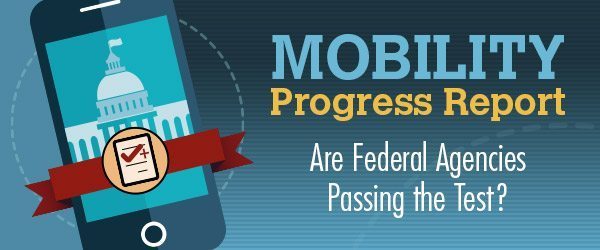A new study from public-private partnership Mobile Work Exchange has found that the U.S. federal government invested $1.6 billion in mobilizing its workforce since the launch of the Digital Government Strategy Initiative. However, sufficient encryption and security training are still seen as emerging needs.
A more mobile workforce is contributing to both savings from reduced real estate needs and the ability to leverage tele-work to provide operational continuity in disaster situations, the report noted. Among human resource managers, 40% said their agency could continue operations in the face of a natural or man-made disaster.
The study is based on a survey of 154 federal CIOs, CHCOs, real estate executives and IT/HR managers.
“By improving technologies and practices, if all federal employees could tele-work in the event of a disaster, agencies could gain an additional $60 [million] per disrupted day in productivity,” Mobile World Exchange concluded, adding that based on the recent winter in Washington, D.C., that works out to an average of $300 million more in productivity gains.
The HR managers also reported that more than 25% of their office space is unoccupied at any given time. Mobile Work Force said that eliminating unused office space with robust ability for tele-working and mobility could have the federal government $15.1 billion in real estate costs each year.
IT managers gave their agency a “B-” on progress toward meeting goals for mobilizing the federal workforce – although 40% acknowledged that operational continuity capabilities have improved as a result of technology investments. More than two-thirds also indicated that they believe employees are more productive because of their access to mobility. Areas of investment include mobile device management, laptops, automatic software updates, secure remote connections and backup/restore capabilities.
Even so, only 56% of federal IT managers thought their agencies were taking full advantage of mobility. And nearly half (47%) reported security concerns, with plans to invest in encryption, smartphones and tablets in the near future.
“Security will be a key consideration driving future mobility decisions,” said Doug Bourgeois, VP of end user computing for the U.S. public sector at VMware, which commissioned the study along with Carahsoift. “As the number of diverse mobile devices in the federal government continues to rise, data security and mobile device management will lead in the conversation. IT and HR managers agree that security concerns are holding their agency back from taking full advantage of mobility, which in return is also affecting employee retention and recruitment efforts. By taking the necessary steps to ensure their workforce is well trained and their data is protected across all devices, agencies can successfully transition to an environment that enables a more productive, dynamic and un-tethered workforce.”
“Federal agencies are taking more and more steps towards graduating to the digital world, but are not quite yet at their full potential,” said Cindy Auten, GM for Mobile Work Exchange. “With reported gains in [continuity of operations], employee productivity and overall efficiency, it builds the business case for agencies to invest in mobile technologies. As agencies look to the future, they must continue to invest in these technologies if they want to save in the long run.”
Image from Mobile Work Exchange.

